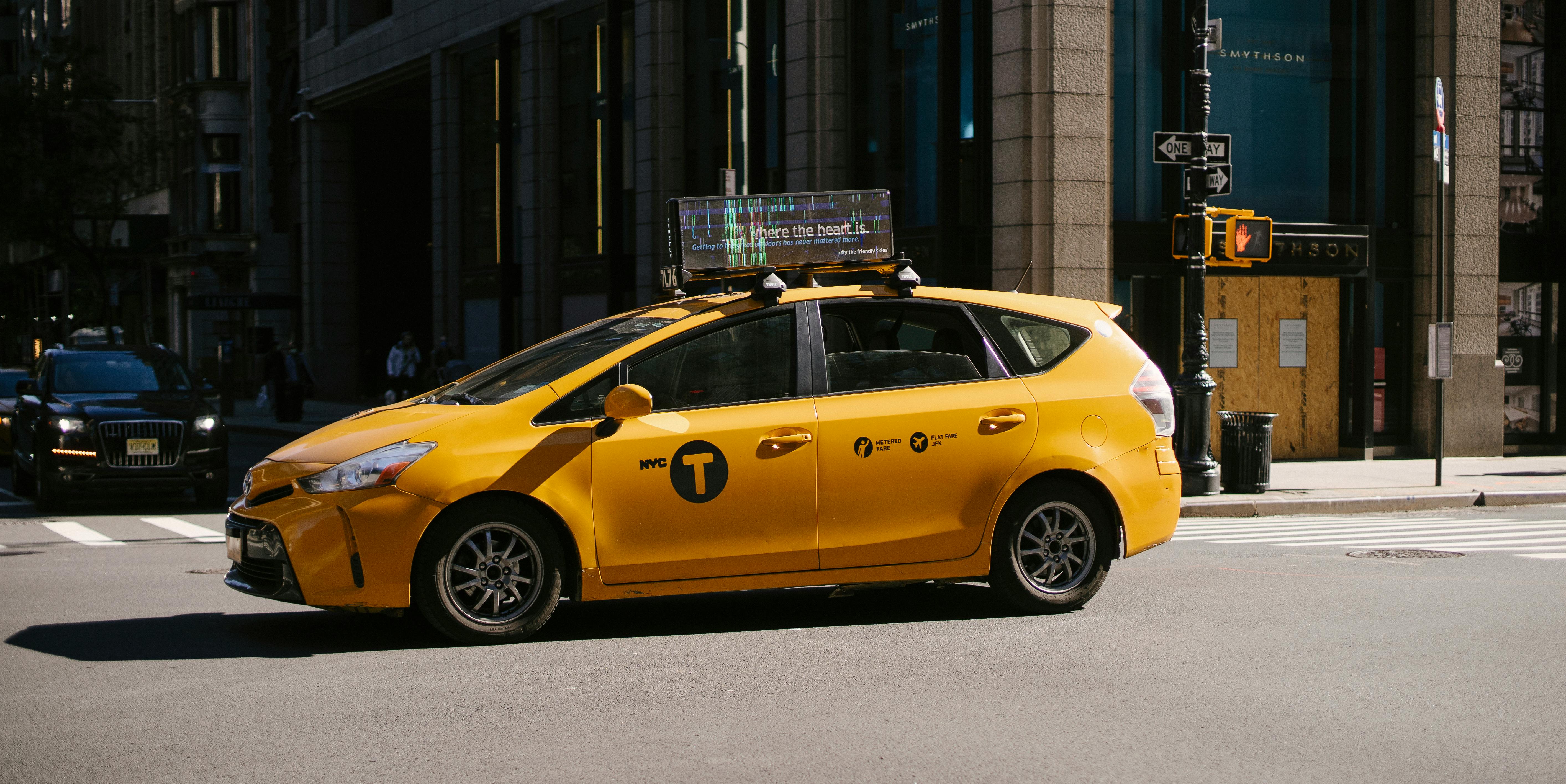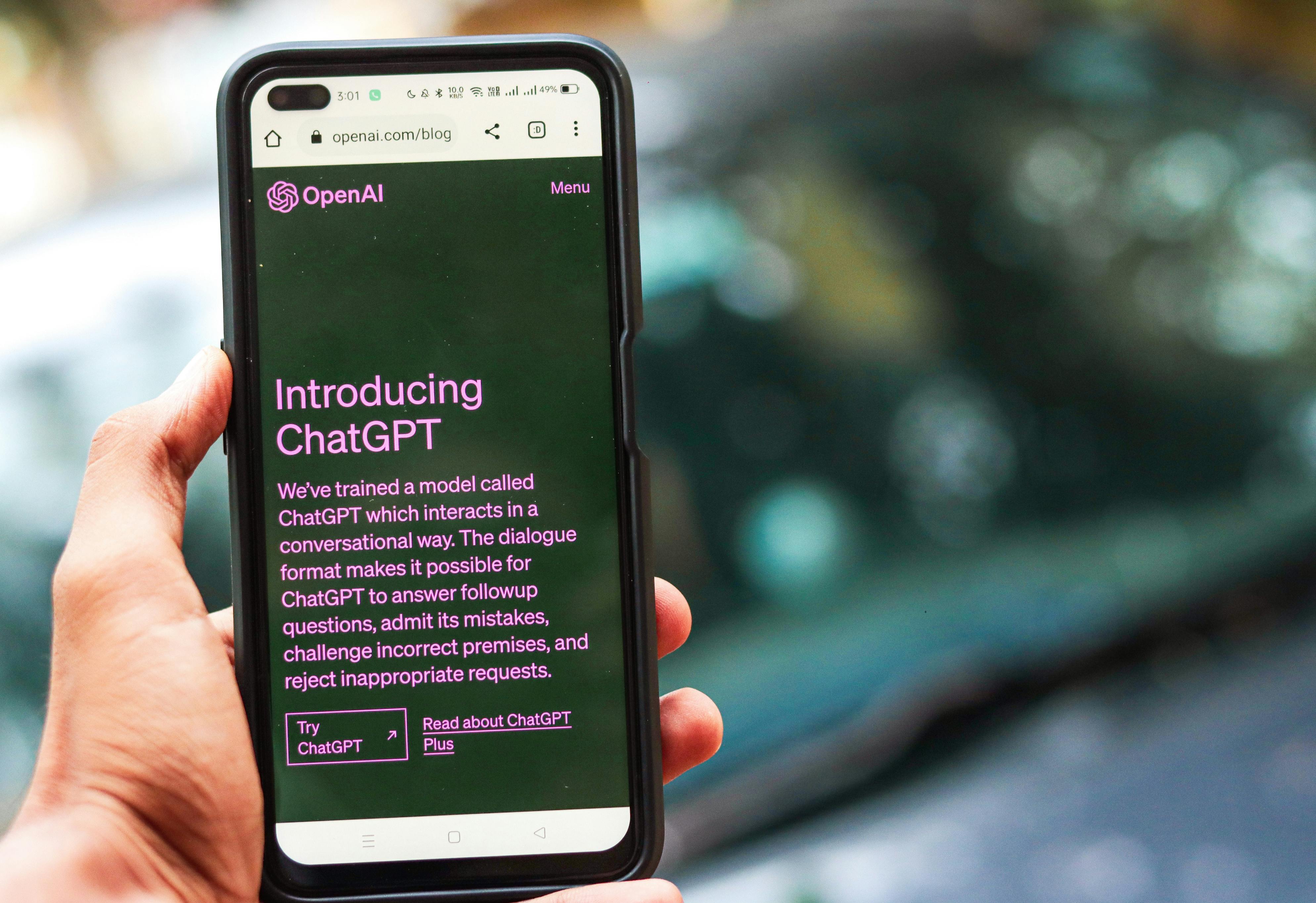
Unveiling the Power of Traffic Bots: Benefits, Pros, and Cons
Traffic bots, or web robots, are computer programs designed to automate certain tasks related to web traffic. These bots mimic human behavior to generate traffic on websites, and they come in various forms and can serve different purposes. Here are some key points to help you understand the basics of traffic bots:
- Definition: Traffic bots are software applications that navigate websites automatically, acting as virtual users. They follow pre-programmed instructions and interact with webpages just like human visitors would.
- Types of Traffic Bots: Various types of traffic bots exist, fulfilling different objectives. Some bots simulate organic user activities, such as clicking on links, scrolling through pages, or visiting specific sections of a website. Others are designed specifically for search engine optimization (SEO), aiming to improve a website's visibility on search engines by generating fake impressions and clicks.
- Automated Tasks: Traffic bots perform specific actions repetitively and autonomously. By automating tasks that humans typically carry out, these bots can save time and effort for certain web-related activities.
- Sources of Traffic: Traffic bots can generate traffic from a range of sources. Some of them include organic search engine results by manipulating targeted keywords in searches, paid advertising campaigns by creating faux clicks/impressions, social media platforms through artificial engagements like likes and shares, and referrer links by artificially generating visits from external websites.
- Legitimate Uses: Although traffic bots have gained infamy due to their association with fraudulent activities, they also hold legitimate uses. Website operators can utilize these bots to gather valuable analytics data, conduct A/B testing for webpage optimizations, or gauge server performance by simulating user interactions.
- Ethics and Concerns: The use of traffic bots raises ethical concerns when they engage in malicious activities like click fraud or spamming. Such activities not only distort web analytics but can also result in financial loss for businesses involved in digital advertising. Moreover, search engines and online platforms have taken measures to detect and mitigate the impact of traffic bots on the fairness and accuracy of their services.
- Detection and Prevention: Due to the potential negative effects of traffic bots, various methods have been developed to detect and prevent their usage. These techniques include analyzing user behavior patterns, implementing captchas or other human verification mechanisms, and employing machine learning algorithms to recognize bot-like activities.
In conclusion, traffic bots are software applications designed to mimic human behavior and generate web traffic. While they can be used for legitimate purposes such as data analysis or testing, they also pose challenges in terms of ethical issues and malicious intents. Understanding the basics of traffic bots helps us navigate the complex landscape of web automation and make informed decisions regarding their use.
 The Many Faces of Traffic Bots: Good Bots vs. Bad Botstraffic bots, often referred to as web robots, are automated software applications designed to perform specific tasks on the internet. While some traffic bots serve positive purposes, others engage in harmful activities. In this blog, we will dive into the intriguing world of traffic bots and explore the contrast between good bots and bad bots.
The Many Faces of Traffic Bots: Good Bots vs. Bad Botstraffic bots, often referred to as web robots, are automated software applications designed to perform specific tasks on the internet. While some traffic bots serve positive purposes, others engage in harmful activities. In this blog, we will dive into the intriguing world of traffic bots and explore the contrast between good bots and bad bots.Good Bots:
1. Search Engine Crawlers: These bots enhance the functioning of search engines by indexing web pages and collecting information to provide better search results.
2. Monitoring Bots: Organizations employ monitoring bots to analyze website performance, measure uptime, identify technical issues, and ensure smooth user experiences.
3. Analytical Bots: These bots gather data from websites and analyze it to generate insights used for marketing research, competitive analysis, and improving website functionalities.
4. Social Media Bots: Several social media platforms employ bots for managing user interactions, streamlining customer service, and preventing spam.
5. Chatbots: Widely used by businesses, these bots interact with users on websites or messaging platforms, providing automated customer support or offering personalized recommendations.
Bad Bots:
1. Scrapers: Bad actors utilize scraping bots to retrieve a large amount of content/data from websites without permission. They often use the scraped data for unauthorized purposes like plagiarism or data harvesting.
2. Spambots: These mischievous bots inundate websites with intrusive advertisements or unwanted content. They can flood comment sections or email accounts with malicious links or promotional messages.
3. Impersonators: Some bots aim to mimic human behaviors through fake social media accounts or fabricated bot-generated posts/comments. They might spread misinformation, amplify controversial views, or meddle with public opinion.
4. Credential Stuffing Bots: By employing stolen usernames and passwords obtained from data breaches, these nefarious bots attempt to gain unauthorized access to various online accounts.
5. DDoS Bots: Distributed Denial-of-Service (DDoS) attacks use networks of infected bots to overwhelm websites, causing downtime and disruptions by flooding them with excessive traffic.
Understanding the distinction between good bots and bad bots is crucial, as each type can significantly impact internet experiences. Responsible bot usage benefits businesses, search engines, and customers alike, freeing up resources, driving efficiency, and enhancing user satisfaction. However, being vigilant about bad bots is necessary to protect against malicious activities that undermine website integrity, security, and user trust.
In conclusion, traffic bots exist in a variety of forms, actively contributing to our online environment. While good bots diligently perform tasks like indexing content, analyzing data, or providing customer support, bad bots engage in fraudulent activities such as scraping data, spamming users, or launching DDoS attacks. Recognizing the various roles and intentions of traffic bots enables us to leverage their benefits while guarding against potential harm.
 How Traffic Bots Can Enhance SEO Efforts and Online Visibility traffic bots can significantly enhance SEO efforts and online visibility by generating more traffic to a website. These bots are automated programs that simulate human behaviors on the internet, such as browsing websites and clicking links. While some companies might argue that using traffic bots to artificially increase website visitors is deceptive, others find it beneficial for boosting search engine optimization and online visibility.
How Traffic Bots Can Enhance SEO Efforts and Online Visibility traffic bots can significantly enhance SEO efforts and online visibility by generating more traffic to a website. These bots are automated programs that simulate human behaviors on the internet, such as browsing websites and clicking links. While some companies might argue that using traffic bots to artificially increase website visitors is deceptive, others find it beneficial for boosting search engine optimization and online visibility.One key advantage of utilizing traffic bots is the ability to improve a website's organic search ranking. Many search engines, like Google, take into account the number of visitors a website receives when determining its ranking in search results. When traffic bots generate a significant amount of traffic, search engines consider it as an indicator of quality and relevance, leading to potential improvements in search rankings.
Increased website traffic through traffic bots also helps in generating more engagement metrics, such as page views, time spent on site, and bounce rate. Search engines value these metrics and consider them crucial when determining a website's relevance and user experience. With higher engagement metrics, websites are more likely to rank better in search results and gain credibility among users.
Additionally, traffic bots can contribute to quicker indexing by search engines. When these bots visit and interact with a website's pages, they signal search engines to crawl and index those pages faster. As a result, new content or updates on your website may be recognized by search engines sooner, enabling faster visibility in search results.
Apart from SEO benefits, traffic bots also improve online visibility by increasing brand exposure. More website visitors mean more eyes on the brand's products or services, which can lead to increased awareness and potential conversions. Moreover, when traffic bots generate traffic from diverse locations and IP addresses, it helps create an illusion of global interest in the brand’s offerings.
Online visibility can be exponentially enhanced with the aid of traffic bots through referral traffic. These bots create backlinks by clicking on links within a website or browsing through other websites and linking back to the target site. By generating referral traffic from various sources, both search engines and users consider the website to be more reputable and authoritative in the industry. This can boost the website's visibility and allow it to attract even more organic traffic.
In conclusion, traffic bots have the potential to enhance SEO efforts and online visibility by increasing organic search rankings, improving engagement metrics, aiding in faster indexing, boosting brand exposure, and generating referral traffic. However, it is essential to use traffic bots responsibly and adhere to ethical practices to maintain user trust and avoid penalties from search engines.
 The Role of Traffic Bots in Simulating Real User Behavior traffic bots play a significant role in simulating real user behavior on websites, effectively mimicking human actions and interactions. With their ability to imitate various actions and behaviors, these bots contribute towards generating website traffic and maximizing online visibility. Here are some key aspects highlighting the role of traffic bots in simulating real user behavior:
The Role of Traffic Bots in Simulating Real User Behavior traffic bots play a significant role in simulating real user behavior on websites, effectively mimicking human actions and interactions. With their ability to imitate various actions and behaviors, these bots contribute towards generating website traffic and maximizing online visibility. Here are some key aspects highlighting the role of traffic bots in simulating real user behavior:1. Increasing Website Traffic: Traffic bots are utilized to generate a surge in website traffic by visiting websites and interacting with their content. This helps webmasters achieve higher visitor counts and boosts the online presence of the website.
2. Mimicking Navigation Patterns: These bots are designed to replicate real users' navigation patterns, including visiting and clicking on specific pages or links within a website. By navigating through different sections, they create an illusion of natural interactions that closely resemble human behavior.
3. Engaging Content Engagement: Traffic bots simulate content engagement by reading articles or blog posts, leaving comments, sharing links, or even liking posts like an actual user would. This engagement helps create a perception of interest and credibility on a website.
4. Enhancing Metrics: Traffic bots contribute to improving metrics such as page views, time spent on site, bounce rates, and click-through rates. By artificially inflating these metrics, these bots provide the impression of high user engagement and site popularity.
5. Search Engine Optimization (SEO): Traffic bots aid in SEO efforts by influencing search engine rankings through increased organic traffic generation. By creating an appearance of active user engagement, websites can influence search engines into perceiving high demand and relevance for their content.
6. Testing Website Performance: With their ability to mimic real user behavior, traffic bots can also be employed to test website performance. This involves evaluating factors such as website speed, responsiveness, server load testing, or monitoring potential errors or vulnerabilities.
7. E-commerce Influence: E-commerce platforms utilize traffic bots to simulate user actions such as adding products to carts, initiating transactions, or completing purchases. By generating simulated transactions, these bots help create a sense of product demand and customer activity.
8. Anonymity and User Agents: Traffic bots make use of various methodologies to emulate genuine user behavior anonymously. They can rotate through an assortment of IP addresses, user agents, and fingerprints when browsing websites, making it challenging to differentiate them from actual users.
9. Risks of Misuse: While traffic bots offer benefits, they also come with risks if misused. Improper usage can lead to skewed analytics, devalue genuine user interaction metrics, manipulate SEO rankings, or generate artificial demand, potentially jeopardizing the integrity and ethical practices of websites.
In summary, traffic bots are utilized to simulate real user behavior on websites, contributing to increased traffic, engagement metrics, and search engine rankings. They mimic navigation patterns, engage with content, and test website performance. While their potential advantages are apparent, proper usage and monitoring are crucial to ensure meaningful interactions without abusive or deceptive practices.
 Boosting Website Engagement Metrics with Traffic Bots: A Closer LookBoosting Website Engagement Metrics with traffic bots: A Closer Look
Boosting Website Engagement Metrics with Traffic Bots: A Closer LookBoosting Website Engagement Metrics with traffic bots: A Closer LookWhen it comes to enhancing website engagement metrics, traffic bots have gained significant attention in the tech world. These sophisticated tools are designed to simulate real user behavior on websites, with the aim of increasing various engagement metrics such as page views, time on site, and click-through rates. Let's take a closer look at how these traffic bots operate and their potential benefits.
Traffic bots use automated scripts or programs to visit websites and perform various actions that mimic human behavior. This may include visiting different pages, clicking on links, filling out forms, scrolling through content, and even making transactions. The goal is to create an impression of genuine user activity that search engines and analytics platforms can recognize.
One of the main advantages of using traffic bots is the potential to improve website engagement metrics. By generating a higher volume of traffic and increasing user interactions, websites can have a more positive appearance in the eyes of search engines. Metrics such as higher page views can indicate that visitors find the site relevant and engaging, leading to potential improvements in search engine rankings.
Additionally, longer time spent on a site signifies that users are actively consuming the content. This metric indicates content quality and relevance, showing search engines that the website has valuable information to offer. Traffic bots can easily simulate extended time on certain pages to boost this metric.
Click-through rates (CTRs) are also critical for assessing the quality of website content and design. Higher CTRs generally indicate that users find calls-to-action compelling enough to click on, which can lead to increased conversions or desired outcomes. Traffic bots can be programmed to mimic clicks on specific buttons, links, or ads in order to enhance these metrics.
While traffic bots can offer certain benefits in terms of engagement metrics, it's important to be cautious about potential drawbacks. Search engines employ sophisticated algorithms that constantly evolve to detect suspicious activities and distinguish human-generated traffic from bot-generated traffic. If caught, websites may face penalties, potentially leading to decreased search rankings or even delisting. It is essential for website owners to understand usage guidelines and ensure compliance to avoid any negative consequences.
In conclusion, traffic bots offer a closer look into the realm of enhancing website engagement metrics. By simulating real user behavior, these tools have the potential to boost page views, time on site, and click-through rates. However, it's crucial to tread carefully and adhere to best practices in order to avoid penalties from search engines. Overall, when used responsibly, traffic bots can be valuable assets in improving website engagement and achieving business goals.
 Analyzing the Impact of Traffic Bots on Analytics and Data Accuracy Analyzing the Impact of traffic bots on Analytics and Data Accuracy
Analyzing the Impact of Traffic Bots on Analytics and Data Accuracy Analyzing the Impact of traffic bots on Analytics and Data AccuracyWhen it comes to analyzing the impact of traffic bots on analytics and data accuracy, it is important to understand the potential effects these bots can have on the validity and reliability of data. Traffic bots are automated scripts or software programs designed to simulate human website visits, influencing a website's traffic metrics. Here is everything you need to know about this matter:
Accessibility and Navigation Behavior: Traffic bots are programmed to imitate human behavior on a website, including accessing different pages, scrolling through content, and even simulating clicks. This poses challenges for accurately measuring real user engagement with a website, as bot-generated data may skew visitor counts, session durations, bounce rates, and other engagement metrics.
Conversion Metrics: Analyzing the impact of traffic bots becomes crucial when assessing conversion rates and marketing campaign effectiveness. When bots mimic actions like form submissions or product purchases, it becomes challenging to gauge true customer intent and measure actual conversions. Consequently, this can lead to misleading interpretations of conversion metrics and hinder accurate ROI calculations.
Visitor Demographics: Gathering demographic information from illegitimate sources can heavily distort insights. Traffic bots artificially inflate visitor counts from various locations and demographics simultaneously. If not detected, these fraudulent visits might mislead inferences regarding targeted audience habits or interests.
Performance Metrics: Extensive bot traffic can affect a website’s optimized performance due to increased load on servers. Higher server loads may influence website speed, responsiveness, or potentially crash the site altogether. As an analyst, being able to differentiate between bot-generated and genuine user activity helps accurately recognize true causes of performance slowdowns or issues.
Advertising Metrics: By generating widespread bot traffic, advertising metrics such as impressions or click-through rates may be falsely elevated. Advertisers heavily rely on accurate advertising metrics for targeted budgeting decisions. Inaccurate data caused by traffic bots could lead to poor investment choices and ineffective campaigns.
SEO Impact: Search engine rankings rely on a variety of metrics and relevant data, including user engagement. If excessive traffic bot data inflates website engagement metrics, search engines may falsely perceive the website to be more popular and deserving of higher rank positioning. This can lead to undeserved exposure at the expense of websites that genuinely offer more value to users.
Detection and Mitigation: Analyzing the impact of traffic bots requires diligent efforts in detecting and mitigating their influence on data accuracy. Implementing sophisticated analytics tools and techniques, such as bot filters or pattern recognition algorithms, can help identify fraudulent activities. Regularly monitoring traffic sources, behavior patterns, and discrepancies between various metrics aids in distinguishing bot-generated from authentic user data.
Overall, studying and understanding the impact traffic bots have on analytics and data accuracy is crucial for precise insights, decision-making, and improving performance optimization efforts. Through effective detection and mitigation strategies, it is possible to limit the influence of bot-generated data and preserve the integrity of analytics metrics.
 Traffic Bots and Digital Marketing: Strategies for Enhanced Performancetraffic bots and Digital Marketing: Strategies for Enhanced Performance
Traffic Bots and Digital Marketing: Strategies for Enhanced Performancetraffic bots and Digital Marketing: Strategies for Enhanced PerformanceIn today's world, where online presence is crucial for businesses, digital marketing has become paramount. One significant aspect of digital marketing is driving traffic to websites and online platforms. This is where traffic bots come into play, offering powerful solutions to enhance performance and gain an edge in the competitive digital landscape. Here is a breakdown of what you need to know about traffic bots and how they can impact your digital marketing strategies:
1. Understanding Traffic Bots:
Traffic bots, also known as web bots or web robots, are software applications designed to mimic human interaction on the internet. They utilize automation technology to carry out tasks such as website visits, clicks, form submissions, and other actions aimed at generating traffic. These bots aim to improve website visibility, visitor engagement, and eventually boost conversions.
2. Advantages of Traffic Bots:
- Efficient Actions: Traffic bots can perform actions at voluminous scale and higher speed than humans possibly can. They help accomplish various marketing tasks quickly, saving time and effort.
- Increased Website Traffic: With consistent website visits generated by traffic bots, businesses can experience a noticeable spike in traffic that leads to improved brand visibility.
- Enhanced SEO: Increased website traffic resulting from traffic bot activities can positively affect search engine optimization efforts by improving organic rankings.
- Online Reputation Management: By inflating engagement metrics through simulated human interactions, traffic bots can improve the overall reputation of a business or its products online.
3. Types of Traffic Bots:
There are different types of traffic bots with specific functionalities that align with various digital marketing goals. Here are a few examples:
- Crawler Bots: These bots aim to gather data by crawling websites and indexing their content for search engines.
- Click Bots: These simulate human clicks on advertisements or links based on predefined patterns.
- Engagement Bots: These carry out interactions with social media content by liking posts, following users, or leaving comments.
- Visitor Bots: These generate website visits by mimicking human browsing behavior.
4. Strategies for Enhanced Performance:
To ensure optimum results using traffic bots in digital marketing, consider implementing the following strategies:
- Define Clear Objectives: Have specific goals in mind before deploying traffic bots. Setting clear objectives can help tailor bot actions accordingly.
- Targeted Traffic Generation: Narrow down your audience and direct bot actions toward potential customers who are likely to engage or convert.
- Test and Monitor: Continuously test the effectiveness of your traffic bot activities and monitor their impact on website metrics, including bounce rate, conversion rate, and session duration.
- Quality Content Creation: Utilize traffic bots as an opportunity to deliver high-quality content to visitors. Engaging and well-crafted content can improve user experience and sustain website traffic.
Incorporating traffic bots into your digital marketing strategies has the potential to boost the visibility and performance of your brand online. However, it is essential to use them responsibly, adhering to ethical practices and ensuring compliance with platform guidelines. With the right approach, traffic bots can be a valuable ally in driving targeted website traffic, enhancing conversions, and maintaining a competitive edge in the fast-paced digital world.
 The Ethics of Using Traffic Bots: Balancing the Pros and ConsThe Ethics of Using traffic bots: Balancing the Pros and Cons
The Ethics of Using Traffic Bots: Balancing the Pros and ConsThe Ethics of Using traffic bots: Balancing the Pros and ConsTraffic bots have become a popular tool for website owners and digital marketers to increase their website traffic. These automated software applications are designed to mimic human web browsing behavior, generating visits, clicks, and impressions on websites. However, the ethical implications of using traffic bots have sparked debates in the online community.
On one hand, proponents argue that using traffic bots can bring several benefits. For website owners, increased traffic can improve their search engine rankings, boost ad revenue, and attract potential customers. From a marketer's perspective, traffic bots can help generate interest, create social proof, and enhance brand visibility.
However, critics argue that the use of traffic bots raises significant ethical concerns. One central issue is the violation of terms of service of various platforms such as search engines and social media networks. Engaging in artificial web activity may go against these platforms' policies and lead to penalties or website delisting. Moreover, utilizing traffic bots might result in unfair advantages over competitors who rely on organic growth and engage with genuine users.
Another ethical dilemma associated with traffic bot usage is the deception it promotes. By artificially generating website traffic, it becomes challenging to determine real user behavior, engagement metrics, and preferences. This may mislead website owners and impede accurate conversion tracking or audience analysis.
Furthermore, employing traffic bots can degrade the overall quality of internet interactions and user experiences. Increased bot-generated traffic may lead to inflated statistics, overcrowded servers, poor user engagement rates, slower website load times, irrelevant searches among genuine users, spamming in comment sections or ads, and an overall sense of dishonesty within the digital ecosystem.
In addition to ethical concerns on a larger scale, using traffic bots can also bring legal implications. In some countries or jurisdictions where specific laws or regulations govern online practices and privacy guidelines, manipulating web traffic through automated software programs might be considered illegal or fraudulent activity.
When weighing the pros and cons of traffic bots, one must consider the principles of fairness, transparency, and responsible digital marketing practices. Striking a delicate balance between maximizing website traffic and maintaining ethical standards is crucial. Finding alternatives to traffic bots, such as investing in content creation, search engine optimization, social media engagement, or genuine advertising efforts might prove more sustainable in the long run.
In conclusion, the use of traffic bots presents a moral dilemma within the digital marketing landscape. While they offer attractive benefits like increased visibility and potential revenue gains, they also pose ethical concerns such as violation of terms of service, deception in user engagement metrics, diluted online experiences, and potential legal risks. Careful evaluation of these factors along with a commitment to ethical behavior and responsible marketing practices can help strike a balanced approach in navigating the world of traffic bots.
 Mitigating Risks: Best Practices for Safe Use of Traffic Bots Mitigating Risks: Best Practices for Safe Use of traffic bots
Mitigating Risks: Best Practices for Safe Use of Traffic Bots Mitigating Risks: Best Practices for Safe Use of traffic botsTraffic bots have become popular tools for website owners and digital marketers to increase page views, generate more traffic, and improve search engine rankings. While they can provide various benefits, their misuse can lead to adverse consequences. To ensure the safe and ethical use of traffic bots, it is essential to follow some best practices and mitigate possible risks. Here are key considerations:
1. Understanding Legality: Before employing a traffic bot, be aware of the legal implications it may carry. Make sure that your use adheres to local laws, terms of service of websites, and online platforms you engage with.
2. Responsible Configuration: Configure your traffic bot responsibly by setting reasonable parameters to prevent excessive hits or requests on a website server. Unrestricted bots can overload websites causing disruptions and violate service policies.
3. Monitoring Traffic Patterns: Regularly monitor traffic patterns generated by the bot to ensure they align with normal user behavior. Large bursts of continuous traffic from a single source can trigger suspicion from search engines or website administrators leading to penalties such as reduced visibility or even blacklisting.
4. Randomized Behaviors: Emulate human-like behavior in your traffic bot, randomizing browsing patterns, navigation paths, session durations, header information, IP addresses, and other attributes. This enhances the credibility of the generated traffic, minimizing suspicions of automated behavior.
5. Use Reliable Proxies: Utilize high-quality proxies when carrying out traffic bot activities. Proxies ensure that requests originate from different IP addresses, thus simulating diverse geographical sources for your traffic.
6. Avoiding Ad Networks: Exercise caution when using traffic bots with ad networks where artificial clicks could lead to ad fraud allegations, potential account suspension, or even legal consequences.
7. Niche-Specific Regulation: Acknowledge specific industry regulations and restrictions when using targeted bots for sectors like finance, healthcare, or government-related sites—the use of bots may inadvertently violate laws such as data protection or HIPAA.
8. Progressive Scaling: Gradually increase the traffic generated by your bot instead of suddenly surging website visits. This helps simulate organic growth, avoiding detection as sudden spikes can raise alarms.
9. Thorough Testing: Prioritize rigorous testing to ensure the bot behaves as anticipated and aligns with your objectives. Emulate diverse user scenarios, uncover any errors, validate responses, and make appropriate adjustments accordingly.
10. Consistent Updates: Stay up to date with the latest developments in bot detection technologies as search engines and websites employ advanced measures to identify and filter out artificial traffic. Adjust your bot settings to circumvent detection algorithms effectively.
11. Sticky Sessions: Implement sticky sessions where the same IP address is used for consecutive requests by an individual bot, emulating natural behavior in session persistence, improving efficiency, and decreasing suspicion.
12. Ethical Considerations: Respect ethical guidelines when using traffic bots. Ensure they are used to enhance legitimate marketing efforts, not to manipulate analytics or produce false results that deceive website owners or third parties.
In conclusion, traffic bots can be valuable tools if used responsibly with adequate precautions. By adhering to legal requirements, simulating human-like behavior, monitoring and adapting to changing detection mechanisms, and following ethical practices, you can uplift your website's visibility without negatively impacting its reputation or violating policies.
 Comparing Popular Traffic Bot Services: Features, Costs, and Effectiveness When it comes to traffic bots, there are several popular services in the market that businesses and website owners can explore. These services vary in terms of features, costs, and effectiveness, which makes it crucial to compare them before making a decision. Here is an overview of what you need to know about comparing popular traffic bot services.
Comparing Popular Traffic Bot Services: Features, Costs, and Effectiveness When it comes to traffic bots, there are several popular services in the market that businesses and website owners can explore. These services vary in terms of features, costs, and effectiveness, which makes it crucial to compare them before making a decision. Here is an overview of what you need to know about comparing popular traffic bot services.Firstly, let's discuss the fundamental features offered by popular traffic bot services. These typically include the ability to generate website traffic from various sources such as search engines, social media platforms, referrers, or any customized sources. Most traffic bots also provide the option to target specific countries or regions for enhanced targeting. Advanced features may include support for JavaScript execution, session management, or even the ability to simulate user behaviors like clicks and mouse movements.
Moving on to costs, pricing structures can vary significantly among different traffic bot services. Some providers may charge a monthly subscription fee, offering unlimited traffic within a certain limit, while others may adopt a pay-per-usage model where user pays for the volume of traffic generated. It's essential to understand the pricing models and evaluate them based on your budget and projected traffic requirements.
Equally important is assessing the effectiveness of a traffic bot service. Factors such as the quality of generated traffic and its impact on website analytics should not be overlooked. Transparent reporting and in-depth analytics tools provided by the service can help you gauge these effectiveness measures and make informed decisions.
There are other aspects worth considering beyond these fundamental elements. It is crucial to investigate whether a particular service adheres to ethical practices and avoids generating malicious or low-quality traffic that could potentially harm your website's reputation or business goals. Additionally, customer support quality and the ease of integration should be evaluated based on your specific needs.
Ultimately, when comparing different services, it's essential to find a balance between features that fit your requirements, a price point that aligns with your budget limitations, and an effective solution that genuinely generates beneficial traffic for your website.
In conclusion, when delving into the world of traffic bot services, it is essential to compare and evaluate popular options based on their features, costs, and effectiveness. Thoroughly understanding these aspects can help you make an informed decision that aligns with your goals and results in the desired outcomes for your website or business.
 The Future of Web Traffic: Emerging Trends in Bot Technology The future of web traffic bot is heavily intertwined with the emerging trends in bot technology. Bots, automated software programs, have become an integral part of online traffic and are transforming various industries. These advancements in bot technology are impacting the way websites function and how businesses engage with their online audience.
The Future of Web Traffic: Emerging Trends in Bot Technology The future of web traffic bot is heavily intertwined with the emerging trends in bot technology. Bots, automated software programs, have become an integral part of online traffic and are transforming various industries. These advancements in bot technology are impacting the way websites function and how businesses engage with their online audience.One crucial aspect of the future of web traffic is the rise of chatbots. Chatbots utilize artificial intelligence (AI) to interact with users and provide conversational experiences. With this technology, websites can offer real-time support and assistance to their visitors. Chatbots can handle customer queries, recommend products or services, and guide users through complex processes, all while providing a seamless and personalized experience.
Another exciting trend in bot technology is web scraping bots. Web scraping bots automatically extract data from websites, which enables businesses to gather valuable information for market research, price comparison, or competitive analysis. These bots help automate the process of extracting data, saving time and resources for businesses.
Bot-powered social media management tools are also shaping the future of web traffic. These tools use bots to schedule and publish content, engage with users, manage advertising campaigns, track analytics, and more. With these capabilities, businesses can streamline their social media strategies and enhance their online presence.
Moreover, search engine optimization (SEO) benefits greatly from bot technology. Bots known as spiders or crawlers continually scan websites to gather information for search engines. This data helps search engines index websites, assess their content relevance, determine rankings, and ensure accurate search results.
Advancements in bot technology are not just limited to automating online processes; they also bring challenges. Today, unethical practices such as bad bots can negatively affect website traffic and security. These malicious bots carry out activities that harm websites or conduct fraudulent actions like data theft or distributed denial of service (DDoS) attacks.
To counter such malicious bots and ensure web traffic integrity, methods like bot detection technologies are emerging. These technologies identify and mitigate the risks posed by malicious bots, protecting businesses and users alike.
In conclusion, the future of web traffic lies in the ongoing development of bot technology. Chatbots are improving user experiences, web scraping bots are enhancing data gathering capabilities, while social media management tools bring efficiency in managing digital content. Additionally, search engines rely on crawler bots to accurately index websites for better search results. On the flip side, the rise of malicious bots necessitates a focus on bot detection technology. As with any emerging tech, ethics becomes crucial for the sustainable growth and security of web traffic in the coming years.
 Legal Considerations When Using Traffic Bots for Boosting Website ActivityLegal Considerations When Using traffic bots for Boosting Website Activity
Legal Considerations When Using Traffic Bots for Boosting Website ActivityLegal Considerations When Using traffic bots for Boosting Website ActivityUsing traffic bots to boost website activity can be an attractive option for website owners and businesses looking to increase their online presence. However, it is essential to understand the legal considerations associated with employing these bots to comply with pertinent laws and ethical standards.
1. Terms of Service: Before implementing a traffic bot, it is important to thoroughly review and understand the terms of service of the bot provider, as well as any relevant agreements with third-party platforms (e.g., ad networks or affiliate programs). Failure to comply with these terms may result in account termination or legal consequences.
2. Security and Privacy Laws: Depending on your jurisdiction, there may be specific laws that regulate the use of bots or govern data protection, user privacy, and cybersecurity. Ensure that your traffic bot adheres to these laws to avoid potential legal issues.
3. Intellectual Property Rights: Websites often contain copyrighted material, trademarks, or patented technology. Bots making unpermitted use of such materials can lead to legal repercussions. Respect intellectual property rights when designing and using bots to avoid infringement claims.
4. Fraudulent Activities: Many jurisdictions have laws against engaging in fraudulent activities, such as click fraud or artificially inflating website traffic. Employing bots that mimic human behavior for the purpose of misleading others or obtaining undeserved benefits can lead to lawsuits or criminal charges.
5. Anti-Competitive Practices: Using traffic bots with the intention of manipulating search engine rankings, affecting advertising auctions, or unfairly competing against others violates antitrust laws in many countries. Understand the regulations in your jurisdiction related to anticompetitive practices so you don't unknowingly breach them.
6. Proxy Networks: Some traffic bots operate by using a network of proxy servers. Make sure that these proxies are obtained in a lawful manner and do not cause harm or violate the policies of individuals or entities managing those servers.
7. Monitoring and Reporting: In several jurisdictions, it is mandatory to inform website visitors that you are using traffic bots and disclose relevant details in the privacy policy to comply with transparency requirements. Be mindful of any obligations you may have regarding informing, monitoring, and reporting bot-related activities.
8. Ad Fraud Policies: If you run advertisements on your website, ensure that your bot complies with the ad network's policies to prevent potential legal consequences resulting from violating their terms or participating in fraudulent activities.
It's crucial to consult with legal professionals familiar with local laws on intellectual property rights, fraud, consumer protection, privacy, and security when planning to use traffic bots. Staying well-informed about legal considerations can help ensure compliance while maximizing the benefits these bots provide in boosting website activity.
 From Concept to Deployment: Designing a Custom Traffic Bot for Your Needs From Concept to Deployment: Designing a Custom traffic bot for Your Needs
From Concept to Deployment: Designing a Custom Traffic Bot for Your Needs From Concept to Deployment: Designing a Custom traffic bot for Your NeedsDesigning and developing a custom traffic bot requires careful planning and execution. It involves following a step-by-step process from conceptualizing the idea to the final deployment. Let's delve into the various stages involved in crafting a customized traffic bot tailored to your needs.
1. Idea Generation: The journey begins with identifying the need for a traffic bot and understanding how it can benefit your business. Consider the goals you aim to achieve, such as increasing website traffic, improving conversion rates, or automating repetitive tasks.
2. Research and Analysis: Thoroughly explore existing traffic bots and study their features, limitations, and user experiences. Analyze your target audience and dissect their preferences to identify the key functionalities required for your unique traffic bot.
3. Conceptualization: Brainstorm ideas based on your research findings. Define the core purpose, functionality, and desired outputs of your traffic bot. It should align with your business objectives and address pain points effectively.
4. Requirements Gathering: Clearly define the technical specifications of your traffic bot. This includes determining compatibility with different platforms, browsers, target demographics, required traffic sources, types of targeted activities (views, clicks, form submissions), and customization options.
5. Architecture Design: Create a high-level technical plan that outlines how different components of your traffic bot will interact with each other to achieve its objectives. Specify client-server communication protocols, databases required for data storage and analysis, as well as automation algorithms.
6. User Interface Design: Develop an intuitive user interface (UI) that allows users to effortlessly configure settings, schedule campaigns, control the flow of traffic, specify geolocation targeting, view analytics, and monitor result metrics.
7. Backend Development: Implement the underlying infrastructure necessary for your bot's functionality. This involves coding server-side components responsible for handling requests/responses and data retrieval/storage. Ensure scalability of backend architecture to accommodate increasing user demands.
8. Bot Algorithm Development: Utilize machine learning techniques, data analytics, and automation methodologies to develop algorithms that empower your bot to simulate human behavior, bypass CAPTCHAs, manage cookie storage, perform automated form submissions, and intelligently navigate through websites.
9. Testing: Thoroughly test your traffic bot across different scenarios and platforms to ensure reliability, accuracy, and compatibility. Conduct unit testing for individual components as well as integration testing to verify smooth coordination between various functionalities.
10. Optimization: Iterate through your bot's codebase, identify performance bottlenecks or security vulnerabilities, and fine-tune algorithms to enhance its speed, efficiency, and resilience against detection mechanisms employed by websites or search engines.
11. Documentation: Create comprehensive documentation covering the setup process, configuration options, troubleshooting guidelines, and best practices for users. Ensure that this documentation evolves along with the bot to address new updates/patches as required.
12. Deployment and Support: Select a hosting environment suitable for your bot's needs – cloud-based solutions offer scalability and flexibility. Deploy your traffic bot in a secure environment and provide ongoing support to users through prompt bug fixes, feature enhancements, and reliable customer support channels.
By following these steps from concept to deployment, you can design a custom traffic bot tailored to your specific requirements. However, always remember to prioritize ethical usage of your traffic bot by respecting limits defined by websites' terms of service, following legal regulations, and prioritizing user consent in any online activities performed on their behalf.
 Navigating the Challenges: How to Identify and Prevent Malicious Bot Activities Title: Navigating the Challenges: How to Identify and Prevent Malicious Bot Activities
Navigating the Challenges: How to Identify and Prevent Malicious Bot Activities Title: Navigating the Challenges: How to Identify and Prevent Malicious Bot ActivitiesIntroduction:
The ever-growing prevalence of technology has seen an increase in both legitimate and malicious bot activities. These malicious bots pose significant challenges for businesses of all sizes, often leading to unwanted consequences such as fraudulent activities, increased server loads, and distorted analysis. Consequently, it is critical for website administrators to have a firm understanding of identifying and preventing these nefarious bot activities. In this article, we will explore the key aspects associated with dealing with malicious bots, offering practical insights to navigate these challenges effectively.
1. Bot Detection Techniques:
Identifying malicious bot activities starts with implementing reliable bot detection techniques. Traditional approaches such as CAPTCHAs and cookies offer a baseline level of security but may not be sufficient against evolved bots. Implementing JavaScript or browser-based challenges can help determine whether a user is a genuine visitor or a malicious bot attempting to penetrate your systems.
2. traffic bot Analytics:
Regularly monitoring traffic patterns can provide valuable insights into spotting potential bot activities. Analyzing metrics like pageviews, engagement times, bounce rates, and referrers can help identify suspicious spikes, unusual patterns, or inconsistent actions that suggest the presence of bots.
3. User Behavior Analysis:
Examining user behavior can shed light on potential malicious bot activities. Identifying high-speed or automated interaction sequences, repetitive clicks within specific time frames, direct access to restricted pages, or robotic account creation processes are telltale signs of suspicious actions by bots.
4. IP and User Agent Filtering:
Implementing IP address and user agent filters can provide an effective line of defense against malicious bots. By blacklisting known bot IPs or blocking high-frequency requests from certain IPs, one can prevent unauthorized access and reduce the likelihood of damage caused by bots.
5. Source Validation:
Verify the authenticity of incoming traffic sources to ensure valuable resources are not wasted on serving malicious bots. Utilize browser HTTP header analysis to authenticate referrers and prevent bots from manipulating traffic sources. Ideally, maintain a whitelist of trustworthy domains that generate referral links.
6. Implementing AI-Based Bot Detection Tools:
Leveraging advanced Artificial Intelligence (AI) technologies can enhance the efficiency of identifying and combating malicious bot activities. These tools learn from past user behavior data to intelligently differentiate genuine users from bots automatically, offering a proactive approach to bot management.
7. Regular Security Audits:
Conducting security audits is crucial to ensure the continued resilience of your website against malicious bots. Stay informed about the latest bot techniques and threats by regularly researching industry news, attending relevant conferences, or engaging with cybersecurity communities. By actively staying up to date, you can proactively address emerging bot challenges.
Conclusion:
Preventing and malicious bot activities is an ongoing challenge in today's digital landscape. By implementing a combination of robust detection techniques, thorough traffic analytics, and continuous learning through security audits, website administrators can significantly reduce the impact of these malicious bots on their operations. Proactive defense, alongside continuously evolving your prevention strategies using AI-based tools, will enable you to navigate the challenges successfully and provide a safe browsing experience for genuine users while keeping malicious activities at bay.
 Crafting Compelling Content: Attracting Both Human and Bot Traffic for Maximum ImpactCrafting compelling content is key when it comes to attracting both human and bot traffic for maximum impact. To grab the attention of your audience, both real readers and search engine bots, you need content that stands out. Here are some essential factors to consider:
Crafting Compelling Content: Attracting Both Human and Bot Traffic for Maximum ImpactCrafting compelling content is key when it comes to attracting both human and bot traffic for maximum impact. To grab the attention of your audience, both real readers and search engine bots, you need content that stands out. Here are some essential factors to consider:Purposeful and Relevant: Your content needs to serve a purpose and be relevant to your target audience. Deliver information that solves their problems, answers their questions, or entertains them. By catering to their needs, you'll attract both real visitors and search engine crawlers.
Attention-Grabbing Headlines: A captivating headline will entice humans to click and read further, while also encouraging bots to rank your content higher in search engines. Think about using powerful keywords strategically within your headline to make it pop.
Engaging Introduction: Begin your content with an engaging introduction that immediately grabs the readers' attention, provokes their curiosity, or appeals to their emotional side. This will make them want to keep reading and lower bounce rates from human users.
Relevant Keywords: Utilize appropriate keywords throughout your content, naturally integrating them into your writing without sacrificing readability. Bots rely on these keywords to understand the context and relevance of your content.
Proper Formatting: Break up your content into smaller paragraphs or sections, making it visually appealing and easier for readers to consume. Including subheadings can guide both human users and bots through the article, identifying key points along the way.
Compelling Imagery: Incorporate high-quality images related to your topic, as they enhance readability and engage readers visually. Optimizing your image alt tags with relevant keywords will assist bots in understanding what the images represent.
Internal and External Links: Include internal links within your content to direct readers to other valuable resources within your website. Additionally, incorporating external links to reputable sources strengthens the credibility of your post in the eyes of search engine bots while providing additional references for human visitors.
Valuable Content Length: Strive to create comprehensive content that delivers unique value to your audience. Longer, in-depth articles tend to attract both engaged readers and gets favor from search bot crawlers.
Grammar and Readability: Ensure your content is free of grammatical errors and typos. Poorly written content can deter readers and potentially confuse bots, resulting in lower rankings.
Clear Call-to-Action: Encourage reader engagement by embedding a clear call-to-action within your content, guiding visitors to comment, share, or explore further. Responsive users are more likely to connect with other humans and earn visibility points from bots as well.
By crafting compelling content that appeals to both human users and search engine bots, you increase your chances of reaching a wider audience while optimizing your website's visibility. Remember that authenticity, relevance, and providing real value will always appeal to both real readers and traffic bots alike.
